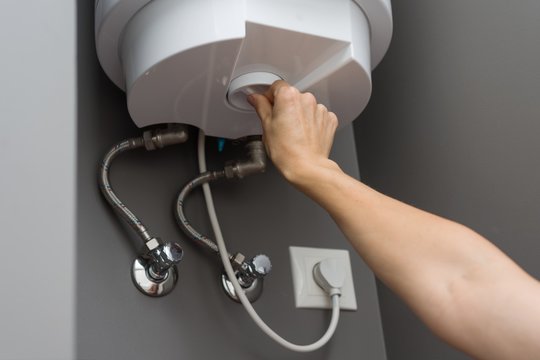Important Care Strategies for Your Home's Hot Water System
Important Care Strategies for Your Home's Hot Water System
Blog Article
This post directly below on the subject of Tips on Maintaining a Water Heater is particularly engaging. Don't miss out on it.

Hot water is crucial for everyday comfort, whether it's for a rejuvenating shower or cleaning recipes. To ensure your warm water system runs efficiently and lasts longer, normal upkeep is crucial. This post gives practical ideas and insights on exactly how to keep your home's hot water system to stay clear of disruptions and costly repair services.
Introduction
Preserving your home's warm water system might appear difficult, yet with a few basic steps, you can ensure it runs efficiently for many years to find. This overview covers everything from recognizing your hot water system to do it yourself upkeep pointers and knowing when to employ professional assistance.
Value of Keeping Your Hot Water System
Normal maintenance not only prolongs the life-span of your warm water system yet also guarantees it operates effectively. Ignoring upkeep can bring about decreased performance, higher energy expenses, and also early failing of the system.
Signs Your Warm Water System Needs Maintenance
Understanding when your warm water system requires attention can avoid major problems. Keep an eye out for indicators such as irregular water temperature, odd noises from the heating unit, or rustic water.
Comprehending Your Hot Water System
Before diving into maintenance tasks, it's valuable to comprehend the fundamental parts of your hot water system. Typically, this includes the water heater itself, pipelines, anode poles, and temperature level controls.
Monthly Maintenance Tasks
Regular monthly checks can help catch small concerns prior to they rise.
Purging the Hot Water Heater
Purging your water heater removes debris build-up, improving performance and lengthening its life.
Checking and Replacing Anode Rods
Anode poles prevent deterioration inside the container. Checking and replacing them when broken is vital.
Examining and Adjusting Temperature Level Setups
Adjusting the temperature level setups guarantees optimum efficiency and safety.
Do It Yourself Tips for Maintenance
You can perform a number of upkeep tasks on your own to keep your hot water system in leading condition.
Looking for Leaks
Routinely check pipes and links for leaks, as these can bring about water damages and higher expenses.
Evaluating Stress Alleviation Valves
Testing the stress relief valve guarantees it works appropriately and stops excessive stress build-up.
Insulating Pipelines
Insulating warm water pipes minimizes heat loss and can conserve energy.
When to Call an Expert
While do it yourself maintenance is useful, some concerns require professional competence.
Facility Issues Needing Specialist Assistance
Instances include significant leakages, electrical troubles, or if your water heater is constantly underperforming.
Regular Expert Upkeep Benefits
Expert upkeep can include complete examinations, tune-ups, and ensuring conformity with safety and security criteria.
Conclusion
Routine upkeep of your home's hot water system is necessary for performance, longevity, and expense financial savings. By adhering to these ideas and knowing when to seek expert aid, you can ensure a reputable supply of warm water without unanticipated disruptions.
How to Maintain an Instant Hot Water Heater
Before tinkering with your hot water heater, make sure that it’s not powered on. You also have to turn off the main circuit breaker and shut off the main gas line to prevent accidents. Also turn off the water valves connected to your unit to prevent water from flowing into and out of the appliance. 2. When you’re done, you have to detach the purge valves’ caps. These look like the letter “T†and are situated on either side of the water valves. Doing so will release any pressure that has accumulated inside the valves while at the same time avoid hot water from shooting out and burning your skin. 3. When the purge valves’ caps are removed, you have to connect your hosing lines to the valves. Your unit should have come with three hoses but if it didn’t, you can purchase these things from any hardware or home repair shops. You can also get them from retail stores that sell water heating systems. Read the user’s manual and follow it to complete this task properly. When the hosing lines are connected, open the purge port’s valves. 4. You should never use harsh chemical cleaners or solutions when cleaning your unit. Make use of white vinegar instead. It should be undiluted and you’ll probably use about 2 gallons. 5. Now flush your water heater. This task should probably take about 40 minutes. We can’t give you specific directions for this because the procedure is carried out depending on the type, model and brand of your heater. With that being said, refer to the user’s manual. 6. When you’re done draining the unit, you have to turn off the purge port valves again. Remove the hosing lines that you earlier installed on each of the water valves. Put the valve caps (purge port) back in their respective places and be very careful so as not to damage the rubber discs that are found inside these caps. 7. Now that everything’s back in place, check your user’s manual again to find out how to reactivate your water heating system. 8. Once it is working, turn one of your hot water faucets on just to let air pass through the heater’s water supply pipes. Leave the tap on until water flows smoothly out of it. https://www.orrplumbing.com/blog/2014/september/how-to-maintain-an-instant-hot-water-heater/

I came across that page about Tips on Maintaining a Water Heater while doing a lookup on the search engines. Are you aware of anybody else who is in the market for the niche? Feel free to promote it. Bless you for your time. Don't forget to pay a visit to our blog back soon.
Start Now Report this page